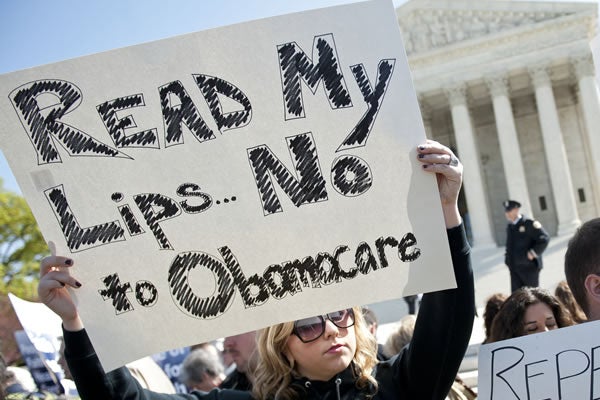Then: In his September 9, 2009, speech to a joint session of Congress, President Obama declared, “I will not sign a plan that adds one dime to our deficits—either now or in the future.”
Now: Over the next 75 years, the Affordable Care Act—Obamacare—will add an estimated $6.2 trillion to the primary deficit under the most realistic outlook on federal spending, according to a new report by the Government Accountability Office (GAO), the nonpartisan fiscal watchdog of Congress. The primary deficit, as noted by the GAO, is the difference between federal revenues and non-interest spending.
The Daily Signal depends on the support of readers like you. Donate now
Senator Jeff Sessions (R–AL), who commissioned the study, released its findings this morning at a Senate Budget Committee hearing. The GAO report examines the long-term impact of Obamacare on the nation’s fiscal health.
Projections of spending and deficits and debt, as the GAO analysts observe, are often calculated under the “Baseline Extended Simulation,” which assumes that current law will “continue unchanged.” These projections can also be calculated under an “Alternative Simulation,” which assumes “historical trends and policy preferences continue.” Different assumptions lead to very different results.
The GAO found that under the baseline simulation the deficit problem shrinks but is not solved. Under the alternative simulation over 75 years, the GAO found the “primary deficit” would increase by 0.7 percent of gross domestic product (GDP) (Figure 5, p. 19) because of Obamacare. Translating that 75-year percentage estimate into today’s dollar amount, as Senator Sessions pointed out, would be $6.2 trillion over the next 75 years.
The GAO dutifully noted that the Medicare Trustees, the Congressional Budget Office, and the Office of the Actuary “all expressed concerns about whether certain cost containment mechanisms included in PPACA [Patient Protection and Affordable Care Act] can be sustained over the long term.”
Obamacare’s critics never bought the “current law” scenario. In 2011, The Heritage Foundation forcefully challenged the Administration’s budget deficit reduction claims. The Administration’s claim that the law would be an instrument of deficit reduction strained credibility from the outset. In the first 10 years, the budget window 2010–2019 only included six years of Obamacare’s major spending, since the Medicaid expansion and exchange subsides would not begin until 2014.
But the Administration based its “fiscal responsibility” claim on a variety of unrealistic budget tricks and gimmicks and plain wishful thinking:
- The collection of revenues and premiums on the front end and payouts of benefits on the back end result in the assumption of $70 billion in revenues from the CLASS Act (now defunct);
- The continuation of the Medicare physician payment update formula (the yearly “doc fix”);
- The Congressional retention of $716 billion in Medicare payment cuts on the face of frenzied provider lobbying;
- The absurd claim that Medicare payment reductions would simultaneously enhance Medicare “solvency” while financing new insurance coverage expansions;
- The assumption that millions of Americans would be able to keep the employer coverage they have today;
- The belief that the law’s delivery reforms would yield serious budget savings; and
- The belief that further Independent Payment Advisory Board (IPAB) cuts to Medicare would not set off mass bipartisan resistance.
Congressional liberals tried to work the public like a bunch of rubes along the Carnival Midway with their frayed old bags of budgetary tricks. But the public never bought the “deficit reduction” gag. The latest GAO report proves that the public was right to be skeptical.





























